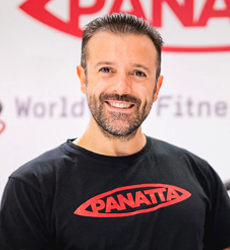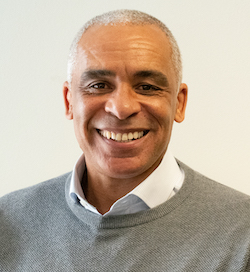The question of why some people pay for a health club membership they don’t use has perplexed health club operators and market analysts for decades. The matter is especially pertinent today, as the cost of living crisis squeezes disposable incomes around the world.
Liz Terry, editor of HCM magazine and CEO of Leisure Media Global, has always hypothesised that people must experience tangible benefits from being a member of a health club even if they don’t use it. Why else would they pay?
She believed that, rather than being something the industry should be apologetic about, the whole issue of ‘sleepers’ is something to be researched and better understood, so the health and fitness sector can gain more insight into what motivates customers, as well as identifying the benefits consumers perceive.
Terry says: “I was very keen to see the issue of ‘sleepers’ being thoroughly researched, to explore the possibility that some people feel powerful benefits from identifying as the kind of person who would have a health club membership – even if they didn’t use it – and that having this feeling about themselves has a real value to them.”
Terry believes sleepers are likely to be gaining benefits in the vital areas of self-identity and hopefulness and that they feel mental health and self-esteem benefits from being a member.
“Hopefulness and a feeling of potential and opportunity are hard for some people to find in today’s world,” she said. “But my theory was that having a health club membership can give people the feeling that there is opportunity there if they choose to take it. Even choosing not to go could be giving people a feeling of agency.”
Terry asked HCM’s longstanding partner, Active Insight (formerly Leisure-net Solutions) to collaborate on a research project explore this topic and seek to understand why members continue to pay for a service they’re not using. The result is a new study – The Active Insight/HCM Health Club Sleeper Insight Report 2023.
About the research
The research was conducted in June 2023 by deploying Active Insight’s consumer insight panel from a national database and representative sample of 250 people.
For the purposes of the research, a lapsed member was defined as a member of a facility (public or private) who had not attended in the previous three months, but who was still paying for their membership. They were asked to select the reason or reasons that applied to their rationale for paying for membership but not attending.
‘Feel good’ factors
The findings were wide ranging and varied, touching on social factors, personal health factors, payment-related issues and variables relating to personal aspirations.
The highest scoring reason given by consumers for paying for a health club membership while not attending was “so I can go if I want to”, with an average of 23 per cent stating this.
Importantly, 16 per cent said that having a membership simply made them “feel good”, with a further 10 per cent declaring that the social kudos of being a member of a specific club was a major factor in their decision-making process.
Also, 16 per cent said they paid “because I think it will encourage me to be more active at some point in the future” and a further 11 per cent said that “it will motivate me to exercise, eventually”.
Fitter, healthier and more active
Nearly 9 per cent agreed with the statement ‘I feel fitter just by having the membership” while 8 per cent agreed that “I feel more active just by having the membership,” and 6 per cent agreed that “I feel healthier by just having the membership”.
The threat of losing a place at a popular health club with a membership limit concerns a surprising large number of consumers, with 9 per cent saying “my friends are members, so I don’t want to lose my membership” and 10 per cent agreeing with the statement that they continue their membership “to make sure I have a membership available if the club becomes full”.
Other findings showed that 10 per cent had a health reason that was preventing them from attending and 10 per cent were in a contract.
Corporate wellness schemes were a factor, with 6 per cent saying that not attending wasn’t a problem as “I don’t pay for it, it’s a company benefit”, and 7 per cent saying, “I get cheaper life insurance by having [a club membership]”.
Only 13 per cent of the sample did not find any of the research statements relevant to their situation, meaning the vast majority were able to articulate a reason for their non-attendance.
Differences by gender
While there weren’t any noticeable trends regarding age, the data shows us some key differences between genders.
We found 25 per cent of women saying they wanted to keep the option of attendance open “so I can go if I want to”, against 19 per cent of men.
Turning to the question that they believe “it will encourage [me] to be more active at some point”, 19 per cent of women agreed against 11 per cent of men.
The social status of the club was found to be significantly more important to men than women, with 14 per cent of men agreeing on its importance, versus 8 per cent of women. There was common ground between women and men in a key area, with 16 per cent of both sexes agreeing with the statement ‘it feels good to have a membership’.
Turning to the question ‘I feel more active’ when I have a health club membership, men clearly gain more benefit from being sleepers, with 14 per cent of men agreeing, versus only 6 per cent of women.
In summary, the most noticeable differences between the sexes related to how the social status of being a member of a particular club and the feeling of being more active through simply having a membership was scored far more highly by men than women.
Meanwhile women tend to ‘hope’ for a more active lifestyle and believe they gain mental health benefits from knowing this option is possible for them.
This study has unlocked a new area of research for the physical activity sector and Active Insight and HCM intend to continue to explore this topic, with ongoing insights, to delve more deeply into the psychology of sleepers and how people experience the perceived benefits of belonging to a health club.
Julie Allen is a director at Active Insight























































